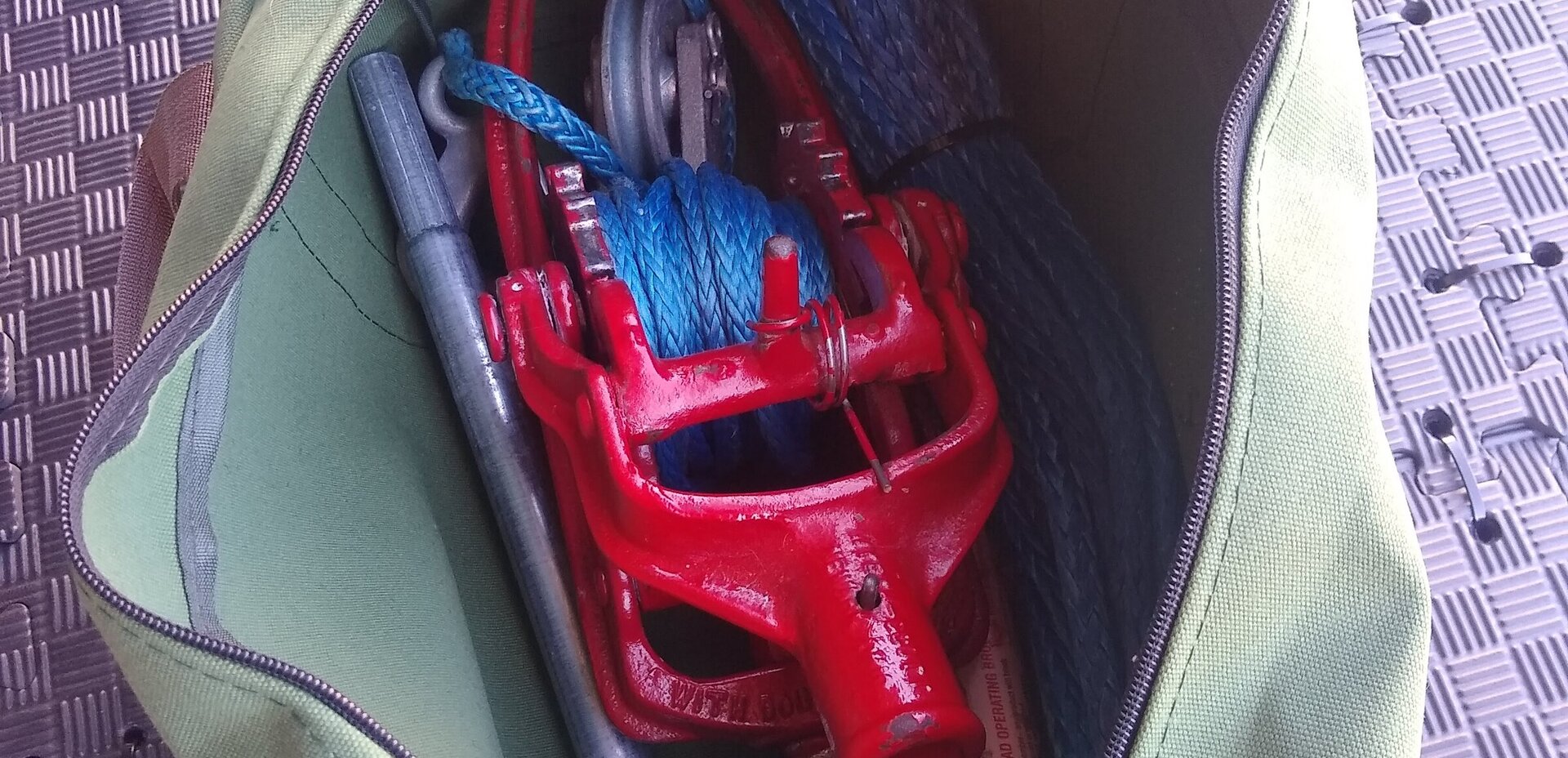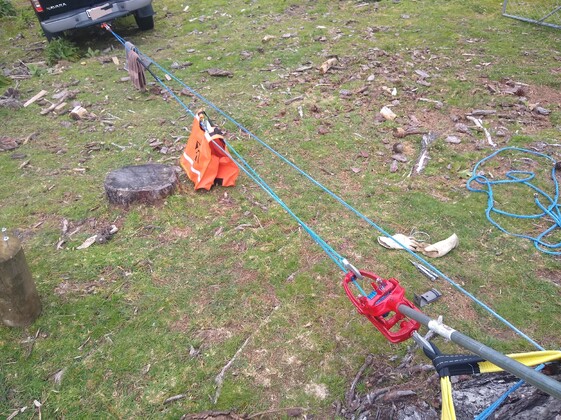An electric winch mounted to a vehicle offers benefits when out exploring and tackling off road trails. Particularly, a front mounted electric winch:
- requires low user effort, it can be operated with a remote,
- the user can drive/steer while winching,
- the user is out of the way, in the event of a winch rope or shackle failure.
However, at the same time these setups often require a custom bullbar to be installed to hold the weight of the winch (many weighing over 50 kg), limit the direction someone can recover from, and in the worst situation, may not work when its most needed. A bullbar and install could easily set you back $2000, excluding the winch purchase and installation.
Hand winches are often seen as an ideal backup to an electric winch. Those wanting quality have traditionally purchased steel cable Tractel Tirfor type models and Wyeth-Scott More Power Pullers, while those wanting a cheap, last for 'a few uses' option tend for the Chinese made come-a-longs.
However, depending on your circumstance, a hand winch may actually be preferable to an electric winch. Using a Wyeth-Scott More Power Puller as an example, some of the benefits include:
- Cheaper overall than an electric winch + bull bar
- Reliable and strong, with pulling capacities of 12,000 pound (similar to electric winches)
- Light weight and portable - weighing only 11 kg, this can be stored in the shed, and thrown in the vehicle when needed. Saves carrying (and paying the increased petrol/diesel costs) of >100 kg of winch/bullbar weight for something that may only be used once every now and then.
- Multiple uses where a vehicle with an electric winch cant get too - from arborist work, boating (jetboating/beach), hunting, building sites, or even reverse recoveries.
The cons of handwinches are the efforts and risk to the wincher incase of a failure. Cheap come-a-longs are the most dangerous, with steel cable that could snap and is abrasive on your hands, short cable lengths (1 - 2 m) means re-sets are needed often, and no built in safety designs. There short handles limit the amount of effort someone can exert, and subsequently encourage the use of 'cheater bars' to increase leverage, which risks exceeding the winch capacity.
Better quality Tirfor style winches and More Power Pullers incorporate either a pin or a handle that fails before the load capacity is reached, which is alot safer than the cheaper alternatives. They also have much longer rope or steel cable (Tirfor only), reducing the number of re-sets necessary when winching.
The More Power Puller goes a step farther, and provides an extension handle to halve the winching effort (preventing injuries), and uses AmSteel Blue synthetic rope, winch has significantly less risk to operators in the unlikely event of it breaking.
A hand winch will always provide a useful backup to an electric, but for some users, they may be the preferred option. Particularly, if you own a work ute or fleet vehicle and upgrade/change every few years, are simply looking to save some gas money or are an occasional off roader looking for that one recovery item.

